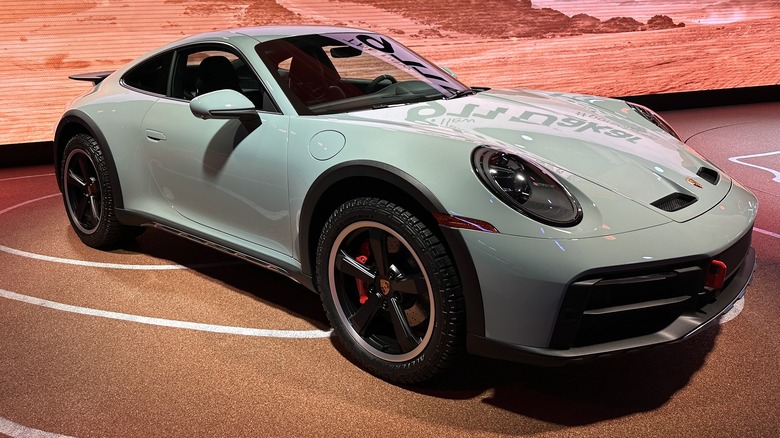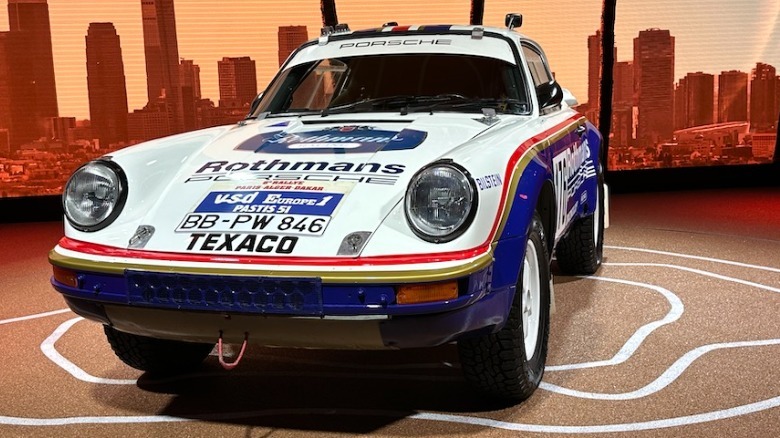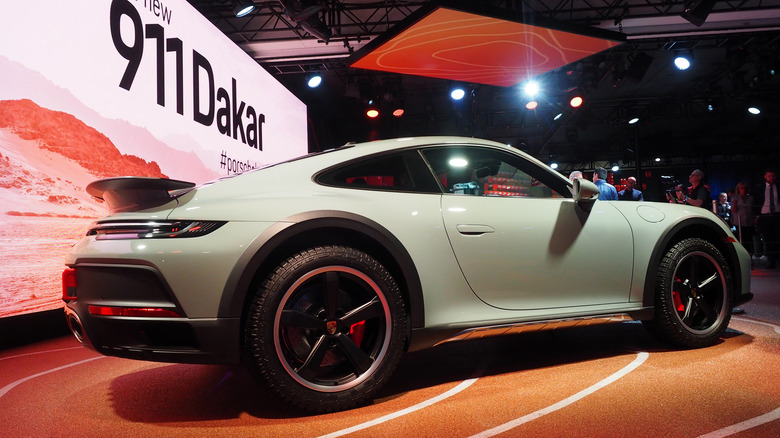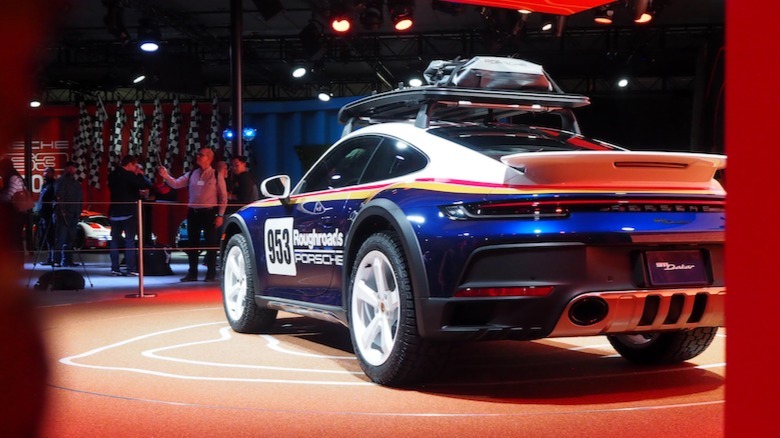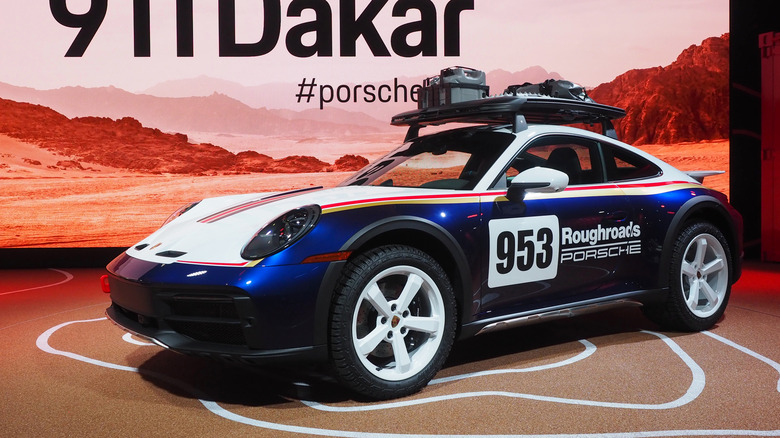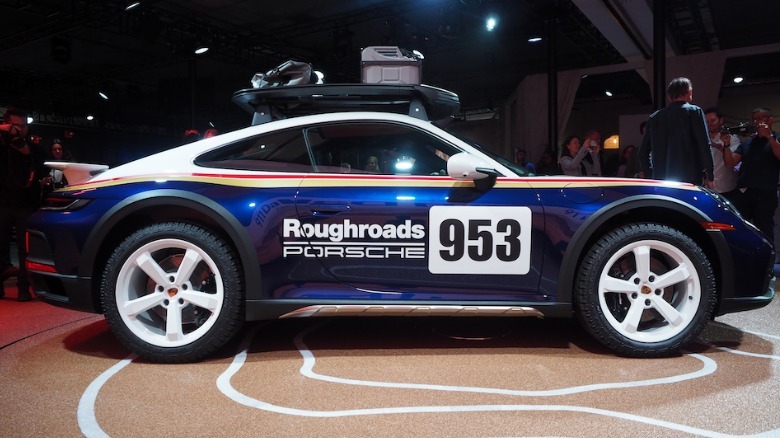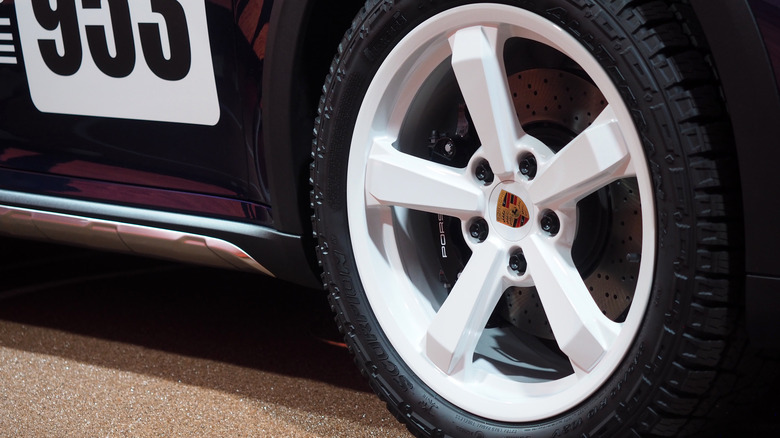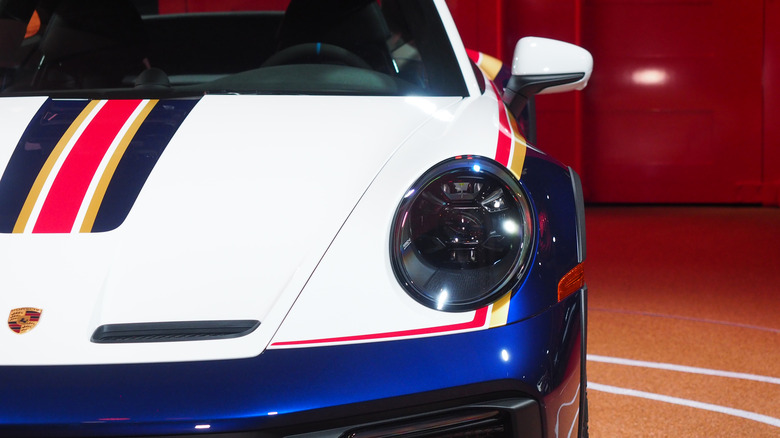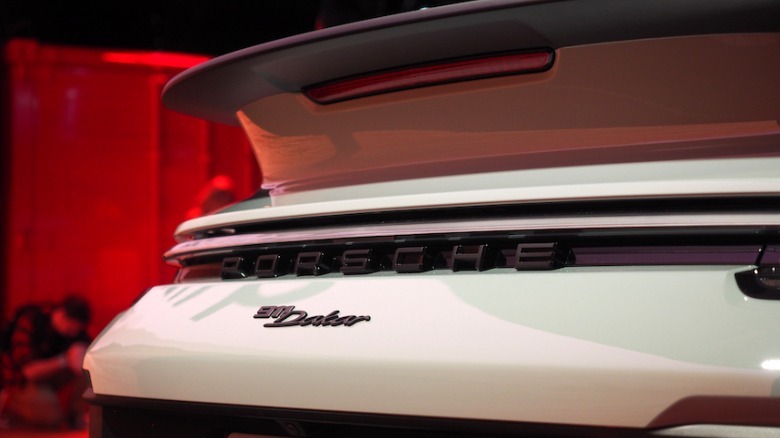How Porsche Turned Its Iconic Car Into The 911 Dakar Safari Off-Roader
The 911 is already praised as the everyday sports car, but the Porsche 911 Dakar makes that true regardless of whether you live in a snow band state, out in the wilderness, or off-grid completely. Lifted, more capable, and still instantly recognizable, it's the German automaker's take on the popular "off-road coupe" category, combining judicious borrowing from elsewhere in the Porsche line-up with key customizations to make this the most burly production 911 ever.
Porsche has had plenty of inspiration over the years for a project like this. While the most obvious nod is to the 1984 Paris-Dakar Rally car, so-called 911 "Safari" builds have been increasingly common among enthusiast owners, running the gamut from DIY efforts to make the coupe rally-ready, through to professional conversions. For Porsche, the 911 Dakar is the next step on from that.
The automaker says it first started thinking about the idea back in 2012, with the 991; it even built a 996-based concept, the 911 Vision Safari. That didn't pan out out for production, though, and so it returned to the concept more recently with the 992 series cars. The result is a limited edition of just 2,500 vehicles, offered only in the 2023 model year. Each will be priced from $222,000 (plus destination), with sales kicking off from today and certain to sell out in short order.
Dressed for success
The 911 is a familiar shape; you don't need to be a car enthusiast to recognize that. For the 911 Dakar, Porsche's designers added and tweaked where that made sense, without taking too much away from the classic silhouette.
The result is, in new Shade Green, surprisingly subtle, or at the other extreme a true head-turner in the optional Rallye Design Package with its two-tone finish and white wheels. Plastic wheel arch extensions are standard, as are stainless steel skid plates at the front, rear, and sides. The front nose is a little shorter, for a better approach angle, too.
It's the accessories catalog where things get really interesting. The pop-up roof tent already offered for the Porsche Taycan also fits the 911 Dakar, for example, and there's also a matching roof basket option too. That connects to a special 12V outlet in the roof, to power its extra headlamps, and it can handle up to 92 pounds of equipment like Porsche's matching fuel tanks and other add-ons.
Same wheelbase, special suspension
Taking a regular 911 off-road would usually be a recipe for expensive disaster. Porsche's iconic two-door is famous for many reasons, but the ability to tackle gravel and sand isn't one of them. So, while the 911 Dakar may have the same wheelbase as a serial 911, there's plenty of differences to make it a rally king.
The PSM stability management has been newly programmed, and there are two new drive modes: Off-Road and Rallye. Porsche has lifted the 911 Dakar, with stretched dampers and special, longer suspension arms, differential locks, and the track width is wider than a regular 911 too. That takes it up 50 millimeters (1.97 inches) compared to a 911 Carrera with sport suspension.
On top of that, there's a custom lift system. It's similar to the hydraulic front-nose lift Porsche offers for 911 owners worried about scraping the front underside on steep driveways, but here it runs at higher pressure and can raise all four corners by a further 30mm (1.18 inches). Automatically engaged in Off-Road mode, it'll work at speeds up to 105 mph, after which point the 911 Dakar automatically drops down to its usual ride height.
Smaller rims for beefier rubber
Usually, you'd expect to find 20-inch wheels at the front of a 911, and 21-inch wheels at the rear. The 911 Dakar, though, sticks with the offset sizing, but drops an inch at both ends. That means 19-inch front rims and 20-inch rears.
Despite that, few will complain that the wheels aren't filling the wells. Downsizing has allowed Porsche to fit larger tires, using custom Pirelli Scorpion All Terrain Plus developed for the 911 Dakar: 245/45 ZR 19 at the front and 295/40 ZR 20 at the rear. They're designed for off-road use, with more than 9mm of tread depth, dual carcasses, and reinforced sidewalls.
Ironically, Porsche started out developing a summer tire with Pirelli for the car, on the assumption that the off-road wheels would simply be too loud for day to day use. Turns out, the automaker says, that's not the case. You'll be able to choose summer performance tires as an option, along with similarly-custom winter rubber that should be better in snowy conditions, but the standard off-road versions are expected to tick most drivers' boxes.
Raiding the 911 parts catalog
Although there's plenty custom in the 911 Dakar, that hasn't stopped Porsche's engineers from borrowing parts and technology from other vehicles in the line-up. The hood, for example, is carbon fiber reinforced plastic (CFRP) and taken from the 911 GT3, while the fixed rear spoiler is also CFRP; that's much lighter, as is the thinner cabin glass.
The cooling system, meanwhile, is taken from the 911 Turbo and Turbo S. Airflow is important, as you'd expect, but so is keeping that system safe from the sort of gravel, rocks, and other detritus likely to be encountered in off-road conditions. So, there are custom stainless steel mesh grilles on both the hood vents and the lower fascia intakes.
With smaller wheels, the brakes are borrowed from the Carrera S, with six pistons at the front and four at the rear. Porsche says they're lighter, too, and there's no concern about stopping power given the lower top speed. The 911 Dakar's tires mean its maximum pace is restricted to 150 mph.
Of course, the biggest part borrowed is the engine, the same 3.0-liter twin-turbo six-cylinder boxer very familiar from the 911 Carrera 4 GTS. It's good for 473 horsepower and 420 lb-ft of torque, and will propel the 911 Dakar from 0-60 mph in 3.2 seconds. Not bad at all.
